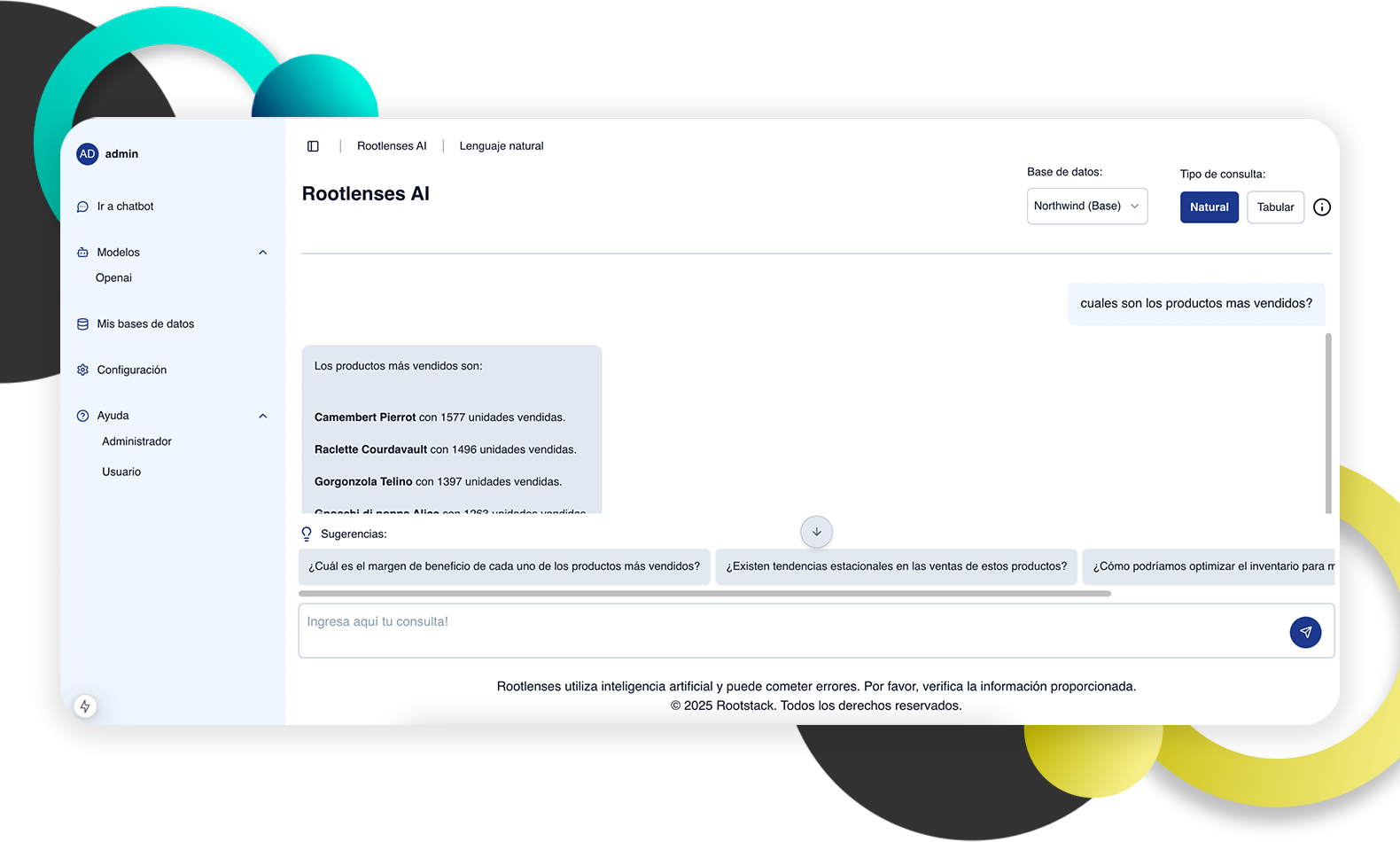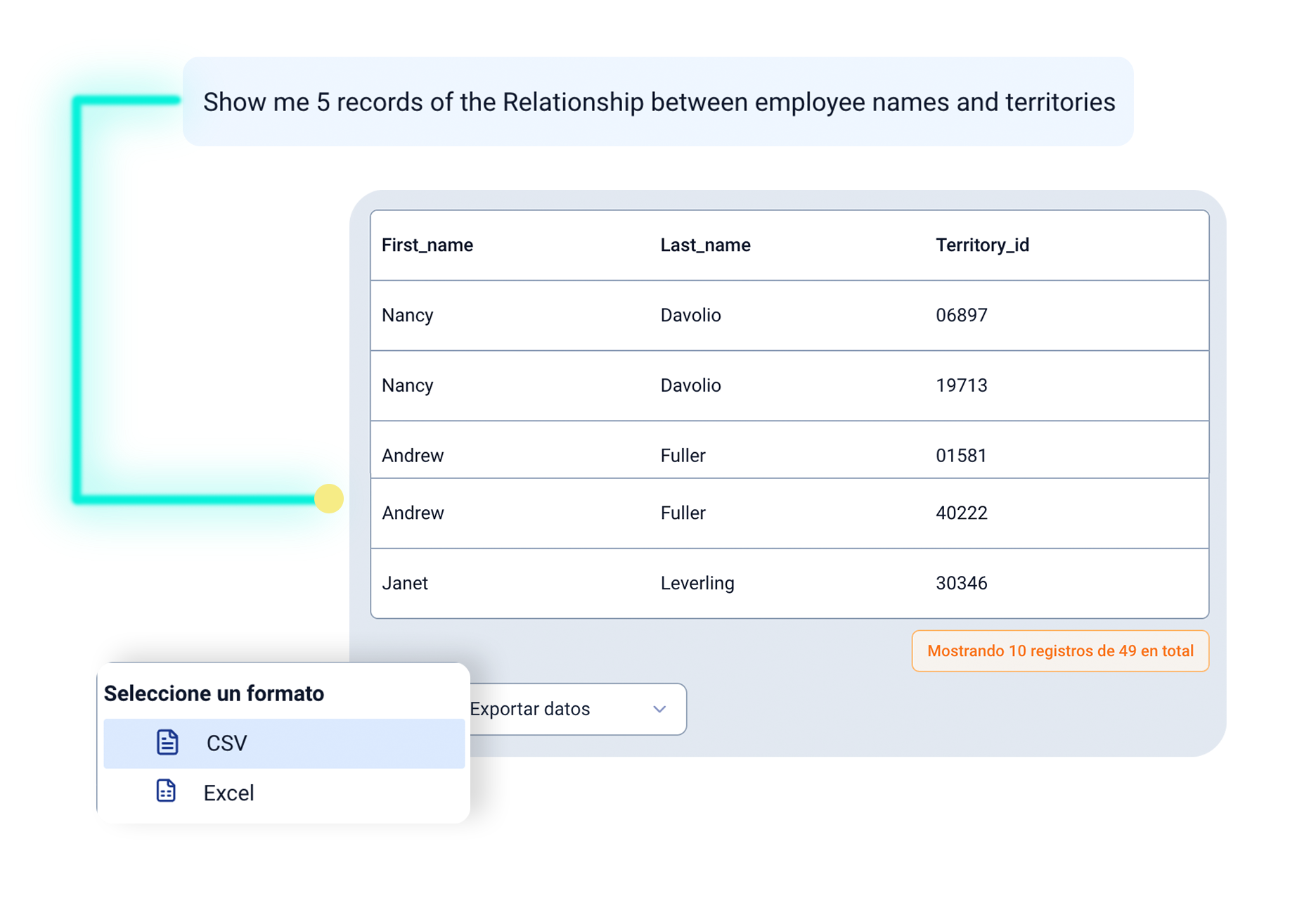In the era of data analytics, having tools that enable informed decision-making has become a priority for any company. Two solutions that stand out for their ability to provide insights from data are Power BI and Rootlenses.
But which is more suitable for your company? And which represents a better investment in terms of savings and ease of use? Below, we compare both platforms from several key angles.
Power BI vs Rootlenses: Which is better and saves your company money?
1. Ease of Use: Who can use the tool?
Power BI is a powerful analytics solution developed by Microsoft. It is designed for users with intermediate or advanced data management skills. Although its interface is user-friendly, it requires a certain learning curve, especially if you want to take full advantage of its potential.
Rootlenses, on the other hand, was created specifically for non-technical users. With this platform, anyone in the company—from marketing to finance—can query complex databases simply by typing questions in natural language.
It's not necessary to know SQL or have prior knowledge of data visualization. This reduces dependence on the technical team and democratizes access to information.
Advantage for Rootlenses: more accessible for non-specialized users.

2. Total cost of ownership: How cost-effective is it?
Power BI offers different licensing levels, ranging from the free version to enterprise plans (Power BI Pro and Premium), with prices increasing as the number of users increases or advanced capabilities are required.
Rootlenses, for its part, represents significant savings by reducing the time spent generating reports and eliminating the need for technical training. By allowing any employee to directly submit queries, it frees up IT resources and accelerates internal analysis processes.
Advantage for Rootlenses: Operational savings by eliminating the need for technical intermediaries.
3. Connectivity and Compatibility
Power BI easily integrates with Microsoft services (Azure, Excel, SQL Server) and other cloud or on-premises services. However, some more advanced integrations require additional configuration knowledge or licensing.
Rootlenses supports over 100 database types and allows for the configuration of multiple engines (MySQL, PostgreSQL, SQL Server, SQLite, etc.). It also facilitates the loading of different AI models such as OpenAI or Ollama, offering flexibility and customization for each company.
It's a technical tie, but Rootlenses wins points for its support for multiple AIs and its ease of connection.
4. Data Visualization and Export
Power BI is a powerful visualization tool, with dynamic dashboards, interactive filters, and a wide variety of charts.
Rootlenses offers simpler yet more effective functionality. It allows you to generate bar, line, and pie charts, export tables to Excel or CSV, and view tabular data. While it doesn't have the same visual depth as Power BI, its focus is on speed and ease of data access, not advanced visual customization.
Power BI has an advantage in dashboard design; Rootlenses wins in speed and simplicity.

5. Scalability and collaboration
Both platforms allow multiple users and access roles. Power BI requires user management through Microsoft 365.
Rootlenses, on the other hand, allows you to assign roles, control table permissions, limit results, and configure technical parameters from an intuitive administration panel.
Rootlenses has an advantage in autonomy and ease of configuration for small and medium-sized teams.
Conclusion: Which should you choose?
Choose Rootlenses if you want a tool thatRootlenses is a solution that any team member can use without training, easily connects to multiple databases, and offers a high return on investment by reducing time, dependencies, and operating costs.
